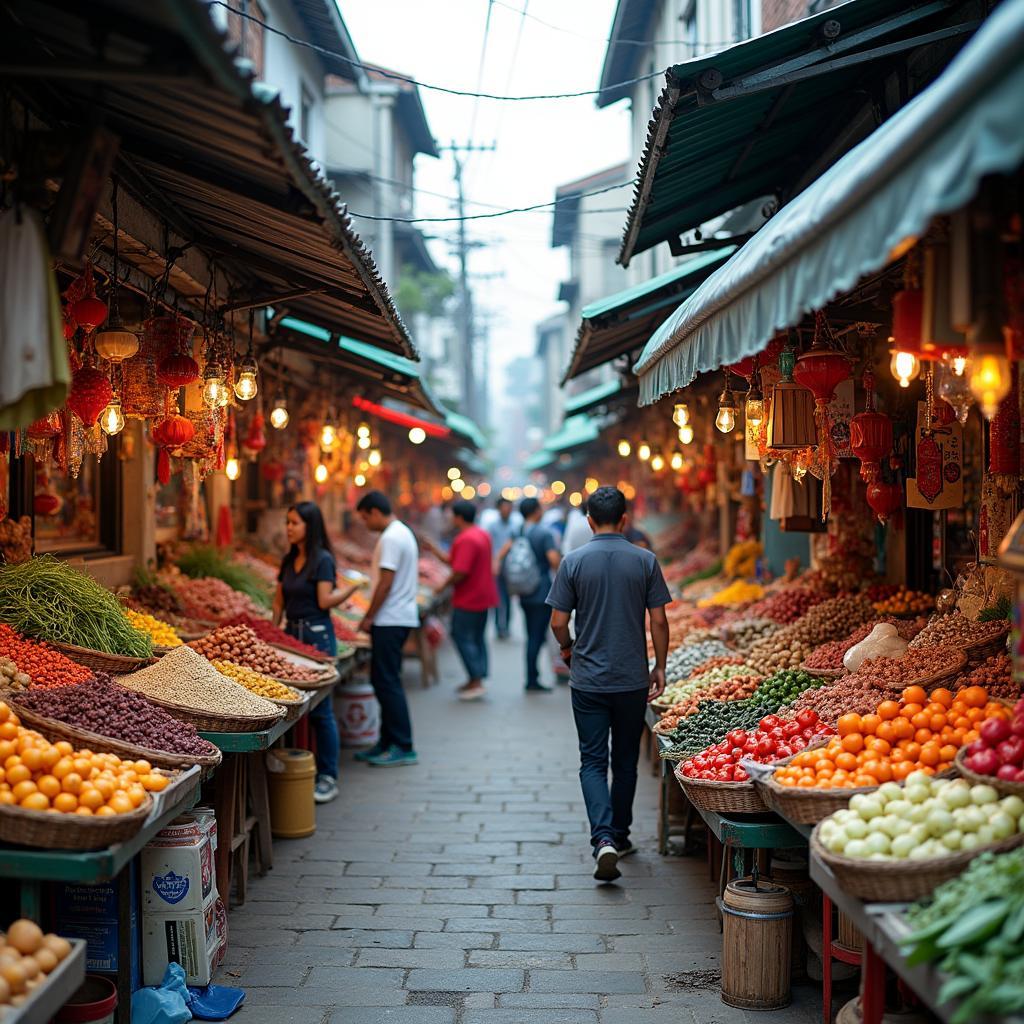Similar to describing a place in your city that is known for its food, discussing street markets is a common topic in IELTS Speaking tests, particularly in Asian countries where traditional markets remain culturally significant.
Part 1: Introduction and Interview Questions
Common questions include:
- Do you often go to markets?
- What kind of markets do you prefer?
- What’s the difference between traditional markets and supermarkets?
Sample answer (Band 8-9):
“I frequently visit local markets, especially on weekends. I particularly appreciate traditional street markets because they offer a more authentic shopping experience and allow for price negotiation. Unlike supermarkets, which are more structured and impersonal, traditional markets have a unique charm and vibrant atmosphere.”

Part 2: Cue Card
Describe a street market you like to visit
You should say:
- Where it is located
- What you can buy there
- How often you go there
- And explain why you like visiting this market
For those interested in describing a local market in your city, here’s a model answer:
Band 6-7 Answer:
“I often visit the street market in my neighborhood. It’s located in the city center and opens every morning. You can find fresh vegetables, fruits, and daily necessities there. I go there twice a week because the prices are reasonable and the products are fresh. The sellers are friendly and I enjoy shopping there.”
Band 8-9 Answer:
“I’m particularly fond of the Ben Thanh Market, which is strategically situated in the heart of Ho Chi Minh City. This historic marketplace is a cultural landmark that dates back to the early 1900s. The market boasts an extensive array of items, from locally-sourced produce to authentic handicrafts and traditional delicacies. I make it a point to visit at least twice a week, not just for shopping but also to immerse myself in the vibrant atmosphere. What draws me to this market is its perfect blend of traditional charm and urban convenience.”
Part 3: Discussion Questions
Q: How have traditional markets changed in recent years?
Similar to discussing international events you found interesting, this requires broader perspective:
Band 8-9 Answer:
“Traditional markets have undergone significant transformation in recent years. They’ve had to adapt to modern consumer preferences by incorporating digital payment systems and improving hygiene standards. However, they’ve managed to retain their cultural significance while evolving with the times. Many markets now strike a balance between preserving traditional elements and meeting contemporary needs.”
Key Vocabulary and Expressions
- Bustling atmosphere /ˈbʌs.lɪŋ/ (adj): full of energetic activity
- Cultural heritage /ˈkʌl.tʃər.əl ˈher.ɪ.tɪdʒ/ (n): traditions passed down through generations
- Haggle /ˈhæg.əl/ (v): negotiate prices
- Local delicacies /ˈləʊ.kəl ˈdel.ɪ.kə.si/ (n): special food items from a particular area
- Vibrant /ˈvaɪ.brənt/ (adj): full of energy and life
Examiner’s Tips
- Focus on detailed descriptions using sensory language
- Include personal experiences to make answers more authentic
- Use a mix of simple and complex grammatical structures
- Practice speaking about markets you’re familiar with to build confidence
Like places you visit often and enjoy, markets provide rich material for developing extended responses with personal connection.